The Best Movie Houses, Ranked
There’s a new movie out called ‘The House,’ which means it’s the perfect time for us to build this annotated ranking of the top nine movie houses ever. And by “ever,” we mean “since 1982.”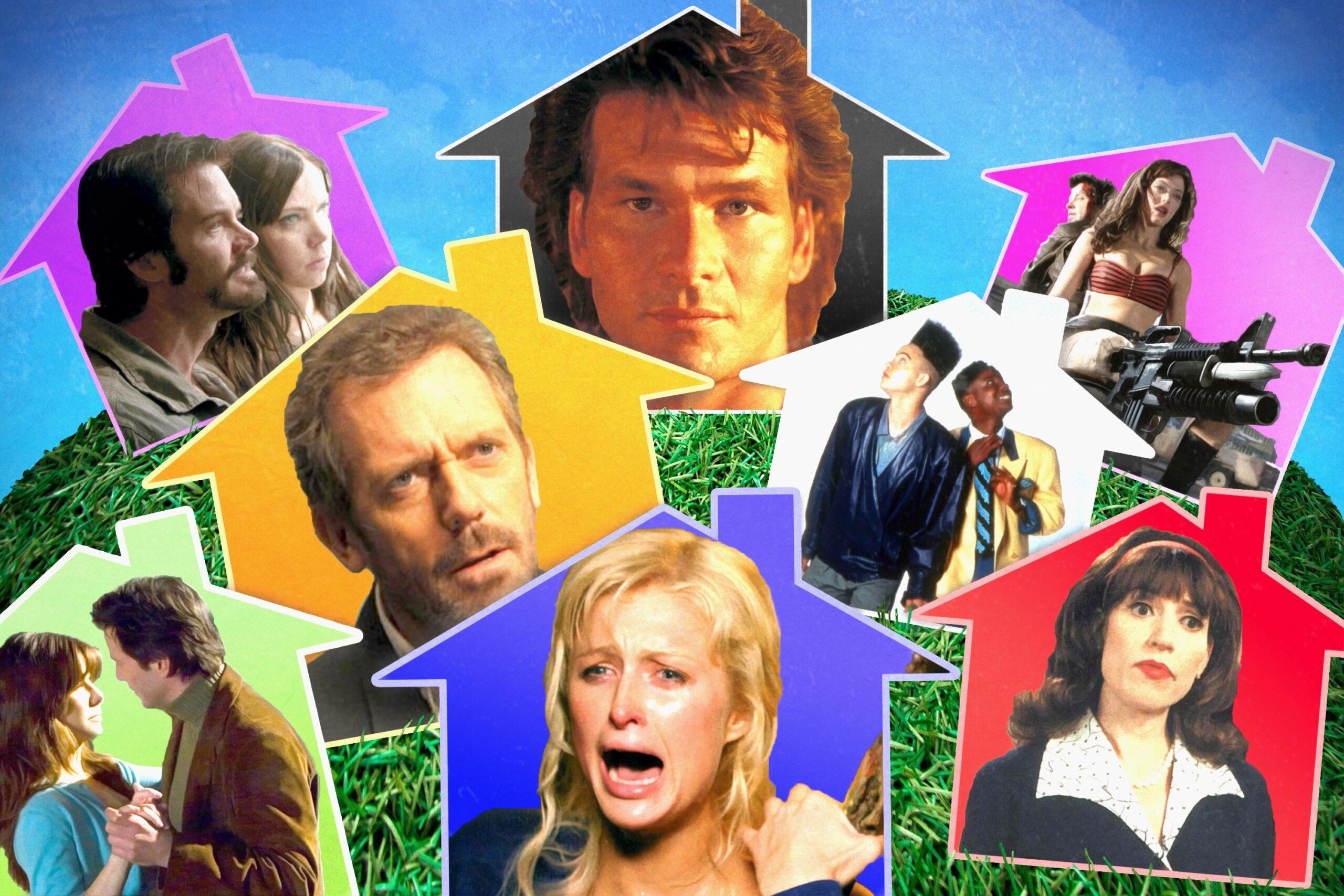
By Shea Serrano and Andrew Gruttadaro
Shea Serrano: It’s important that I be as clear as possible here, because this is a thing that’s easy to misunderstand: What follows is a long, thorough, grand talk about Movie Houses. What does NOT follow is a long, thorough, grand talk about House Movies, which is a totally different conversation. An easy way to frame it is: 2009’s Up, an animated movie about an elderly man who turns his house into an airship in an effort to honor his deceased wife, is a House Movie. It is, to be reductive, a movie about a house. The actual house in the movie, though, is a Movie House. It is a house that’s in a movie. The difference is semantically tiny, but also very big and obvious.
What Andrew and I are going to do is go over the best movie houses. (This, of course, is because there is a movie releasing wide this week called The House.) And since it can’t just be a thing in which we pick the prettiest movie houses (in which case, the entire thing would just be about houses from Nancy Meyers movies, given that Nancy Meyers is a house genius), there are some handrails camouflaged as questions we’ve erected to hold on to so that we stay headed in the right direction. When figuring out what the best Movie House is, you must ask yourself:
1. Was it an actual house?
Andrew Gruttadaro: As a baseline requirement, the best pop culture houses should be able to do some of the general things you want from a house. That is, provide shelter and be a standing structure under which a small group of people can either live or congregate. Call me a traditionalist, but I like a Movie House that does house-like things — even if later in the movie it tries to indefinitely imprison the kid from The Luck of the Irish, like what happens in Smart House.
Shea: This is a good rule. I’m going to tack on an addendum to this: Was it an actual house in a movie that came out after 1982? Going back 35 years seems like plenty enough. (Sadly, this means we’re losing the house from Animal House, which would’ve otherwise certainly ended up in the top five, possibly top three.)
2. How cool was the house? Like, could it have been the star of a music video?
Andrew: Rick Ross, this generation’s preeminent real estate rapper, once said: "My attitude is ‘fuck it,’ house big as Publix." I feel similarly about movie houses, in that it’s much better and more satisfying when the home in question is as big as a grocery store — or at least really cool looking.
Shea: While I agree with you on the point about movie houses that are really cool looking being more satisfying, I disagree with you on Rick Ross being this generation’s preeminent real estate rapper. That title belongs to Young Jeezy, who one time rapped, "House stupid dumb big / my rooms got rooms." I remember watching this Hannibal Buress comedy special a couple of years back and he made a joke about that line in it, saying something close to how the rooms in the rooms were actually closets and that Jeezy was just confused. But then during an interview with Rolling Stone the interviewer asked Jeezy about it and Jeezy responded, "Tell him to upgrade his crib, that’s all. Then his rooms won’t be closets and shit! Cabinets and so-forth!" I always thought Jeezy saying the phrase "cabinets and so-forth" was the funniest shit.
3. Was the house magical or sentient or did it have any kind of special powers?
Shea: Was the house self-aware? Could it talk to the people who lived in it? Would it talk to the people who lived in it? Was it interested at all in trying to kill anyone? Did parts of it secretly serve as a time-travel machine? Those are the sorts of questions that are getting asked here. All in all, this is probably a tinier category than the rest, but still it’s one that cannot be ignored.
4. What was happening in the house, and is that reflected in the title?
Shea: Two things here: First, and this is important in this particular conversation (and possibly only in this particular conversation): Whatever it was that was happening in the house or around the house is crucial. A house that is just stationary and only serving as a place marker of sorts scores lower on the grading rubric than a house that is (philosophically) actionable. As an example of the difference between those two things, consider House of 1000 Corpses, a nightmare terror movie by Rob Zombie from 2003, and Monster House, a sweethearted animated movie from 2006. In House of 1000 Corpses, the things that happen in the house are not directly related to a house. In Monster House, the things that happen in the house are not only directly related to the house, but are also caused by the house. Thus, the house from Monster House scores higher than the house from House of 1000 Corpses.
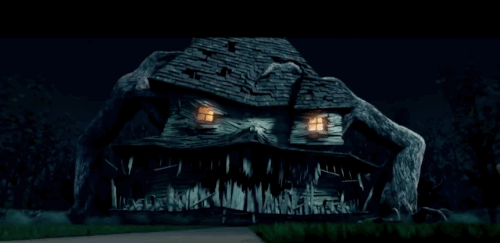
Second, as a cutoff measurement, the only Movie Houses eligible to be considered here are from movies where the word "house" (or a version of the word "house") appears in the title. That means we’re losing important Movie Houses like the aforementioned house from Up and the house from The Amityville Horror and the house from Something’s Gotta Give and so on, and for that I am truly sad, but tough conversations like these make for tough decisions.
5. How essential was the house to its movie?
Andrew: As you mentioned, in some movies, things happen in a house. In other movies, though, things happen because of a house. Those abodes that directly influence the plot of a movie have to be appreciated and elevated — because houses are inanimate objects that do not have active roles in the lives of real human beings. So let’s give extra props to the real boundary pushers out there, the ones who say, "Hey, just because I’m a four-bedroom craftsman with a beautiful kitchen doesn’t mean I can’t be the main character of this major motion picture."
Shea: OK. Everything here seems to fit. Let’s burn through the Top 9 Movie Houses, ninth place to first place, but also add in a few unrelated satellite rankings along the way, too. We can do one every two spots down the list.
The Ranking
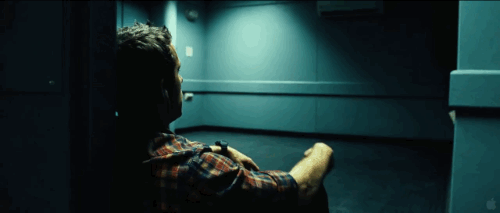
9. The House From ‘Safe House’
Shea: Granted, a minimal amount of time in Safe House, a movie in which Denzel Washington plays a rogue CIA agent named Tobin Frost who’s trying to expose government corruption, is actually spent in the literal safe house. But it’s able to sneak its way into the final spot of the list because it’s one of the few movies where the house gets acknowledged, but also one of the even fewer movies where the importance of the house is considered by multiple characters. The three best instances:
- Matt Weston, a low-ranking CIA agent who’s in charge of sitting there doing nothing, says to an older agent of the house early in the movie, "How am I supposed to get more experience by staring at four walls all day?"
- Once Tobin Frost gets brought in and then the bad guys break in and start killing everyone, he says to Weston, "Remember rule no. 1: You are responsible for your houseguest. I’m your houseguest."
- And then later, after Frost and Weston have escaped from the bad guys who stormed the safe house, Frost tells Weston, "That house was a secure location. Whoever crashed it didn’t stop by a gas station and ask for directions to the nearest safe house. They were invited. Someone told them, Matthew. Think about it. Someone you know, so you better ask yourself: Can you trust your landlord?"
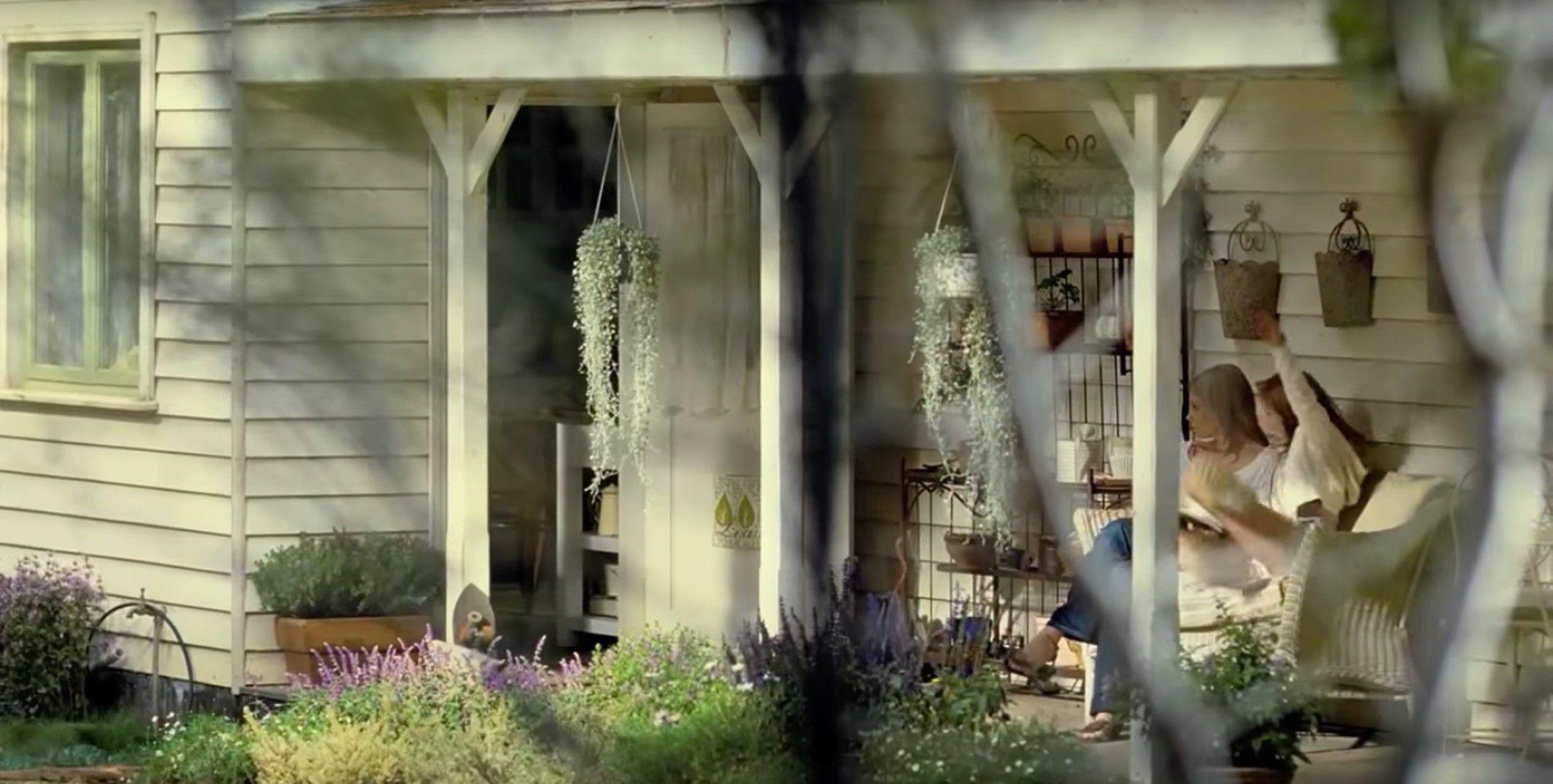
8. The House From ‘The Last House on the Left’
Andrew: Even though it’s on a lake and directions to it are extremely clear, you do not ever want to go to the Last House on the Left. In both the 1972 and 2009 versions of the movie, it is a house where bad guys get killed by two parents after doing horrible, awful things to the couple’s daughter. You can watch the whole movie if you want, but this sentence from the Wikipedia plot summary of the 1972 film should give you a pretty good idea of the vibes of the house: "fellatio on him that turns deadly when she bites off his penis and leaves him to bleed to death." Yeah, nah, this is not the house for me.
Shea: First, because I’m sure that someone will gleefully point out that this selection should violate the No Movie Houses From Before 1982 rule, let me mention that any movie that got a remake automatically gets reentered into the conversation. The house from House of Wax is fine (1953, 2005), the house from House on Haunted Hill is fine (1959, 1999), the house from The Last House on the Left is fine (1972, 2009), etc.
Second, in fairness to the woman who bit that guy’s penis off, she did so because she’d realized that the guy (and his friends) had killed her 17-year-old daughter earlier in the movie. That seems like a perfectly fine response to me. Also, in both movies the bad things only happen in the house as a result of the terrible things that the criminals did (they murder at least one girl onscreen and also rape at least one girl onscreen). So I don’t know that it’s all the way accurate to say "you do not ever want to go to the Last House on the Left." Probably it’d be more accurate to say, "you do not ever want to go to the Last House on the Left if you tried to murder the homeowners’ daughter," which, honestly, doesn’t seem like that hard of a thing not to do. I basically don’t murder anyone every day of my life.

Satellite Ranking No. 1: Rooms in a Real-Life House, Ranked — Shea
8. Dining Room: The most unnecessary of all the rooms in a house, mostly because every room is a dining room when you really think about it.
7. Guest Room: I have been alive for 36 years and have still never lived in a house with a guest room in it. Poor people don’t have guest rooms, is why. More often than not, we have Reverse Guest Rooms, which is the thing where your mom tells you that your uncle is going to sleep in your room on the floor for a few days because he got kicked out of his place again.
6. Game Room: (Potentially a media room, or possibly even an office if the person works from home.) (If it’s a media room, then you can move this room’s place on the ranking all the way to the end.) (If it’s an office then you can move it down to fourth place and then move everything above it back one space.) (If it’s a game room but has an actual arcade version of Mortal Kombat II or NBA Jam in it then you can move it down to first place.)
5. Second Bedroom: The only people the second bedroom is important to are the kid whose room it is and also the parents whenever they tell the kid to "go somewhere."
4. Master Bedroom: The master bedroom makes it this high up because it can double as any of the rooms behind it on the list but can’t be replaced by any of them.
3. Living Room: The final three rooms here are the only truly essential rooms in a house. As long as you have these ones, everything is fine.
2. Kitchen: It loses out to the bathroom only because if you happen to live in a house that doesn’t have a kitchen it’s still possible for you to eat food without leaving the house, whereas if you live in a house without a bathroom it’s not (hygienically) possible for you to use the bathroom without leaving the house.
1. Bathroom: Clearly.

7. The House From ‘Big Momma’s House’
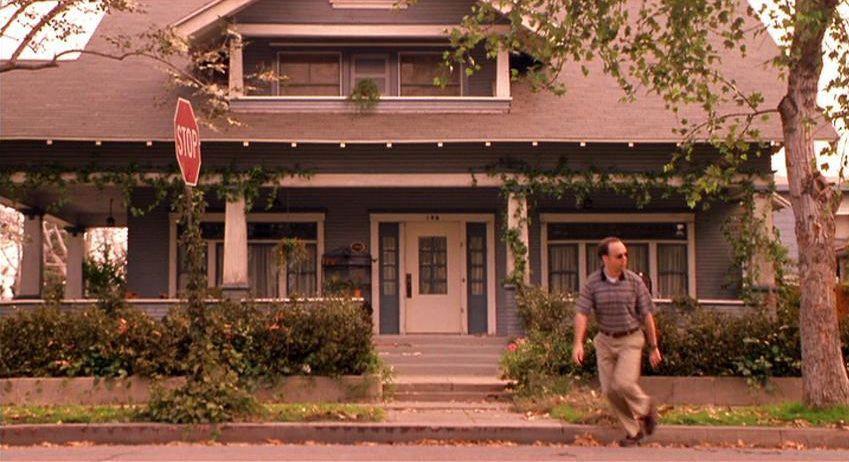
Andrew: The quaint Georgia home of Hattie Mae "Big Momma" Pierce delivers a solid performance in Big Momma’s House, the filmic result of Martin Lawrence seeing Eddie Murphy in The Nutty Professor and asking himself, "Why not me?" The house, which as you may have gleaned, belongs to Big Momma, is the nexus of this film — almost all action occurs in or around it. Everyone from Paul Giamatti to Nia Long to Terrence Howard is pulled toward it, as if the house is a magnet for low-stakes crime and FBI-sanctioned identity theft. Big Momma’s house takes a hit in the rankings because it doesn’t possess any supernatural qualities, nor does it directly influence any of the movie’s plot developments. But I mean, it’s still a good house — look at that wraparound porch!
6. The House From ‘White House Down’
Shea: It’s the highest, most prestigious, most well-known house on the planet. It’s the highest, most prestigious, most well-known house on the planet, and it’s been taken over by American terrorists who are working in cahoots with the vice president to launch nuclear weapons at Iran. It’s the highest, most prestigious, most well-known house on the planet, and it’s been taken over by American terrorists who are working in cahoots with the vice president to launch nuclear weapons at Iran, and Channing Tatum drives a truck through the Oval Office and then shoots a guy a billion times with a turret gun to prevent him from launching the nukes. It’s the highest, most prestigious, most well-known house on the planet, and it’s been taken over by American terrorists who are working in cahoots with the vice president to launch nuclear weapons at Iran, and Channing Tatum drives a truck through the Oval Office and then shoots a guy a billion times with a turret gun to prevent him from launching the nukes, and also Channing Tatum wraps a grenade belt around a guy’s neck, screams, "No jail for you, you little bitch!" and then detonates some of the grenades. It’s the highest, most prestigious, most well-known house on the planet, and it’s been taken over by American terrorists who are working in cahoots with the vice president to launch nuclear weapons at Iran, and Channing Tatum drives a truck through the Oval Office and then shoots a guy a billion times with a turret gun to prevent him from launching the nukes, and also Channing Tatum wraps a grenade belt around a guy’s neck, screams, "No jail for you, you little bitch!" and then detonates some of the grenades, and also Jamie Foxx (who’s playing the president and wearing Jordans) kicks a guy in the face six times and then shoots a guy in the kitchen with an assault rifle.
I went on a tour of the real-life version of the White House one time. It was not nearly as exciting as the movie version of the White House.

Satellite Ranking No. 2: The Best Sports Houses, Ranked by Nickname Accuracy and Coolness — Andrew
6. The Loud House (Syracuse University’s Carrier Dome): A decent nickname in theory, but even though the Carrier Dome’s roof causes audience volume to reverberate, the arena isn’t exactly renowned for its loudness, to the point that I’ve never really heard anyone actually refer to the Dome as the Loud House. Jim Boeheim would probably not know what you were talking about if you said the words "Loud House."
5. The House That Ruth Built (The Old Yankee Stadium): As iconic as the nickname is, it’s now obsolete, and it also erases the hard work of the many faceless men who literally built Yankee Stadium. Pretty disrespectful, if you ask me.
4. The Madhouse on Madison (Chicago’s United Center): The United Center, where the Chicago Bulls and Blackhawks play, is in fact situated on Madison Street, so this nickname does carry immense truth. The exaggerated promise of a horde of figuratively crazy fans is also fun, too.
3. The Big House (Michigan Stadium): The University of Michigan’s football stadium is, in fact, big. Above all, though, you’ve gotta give credit to the school for dubbing its stadium "The Big House" before anyone else could. Since size is relative, really any university could have called their stadium a "big house" and not been wrong, so it’s good that Michigan, whose stadium is the second largest in the world, locked that shit down early.
2. The House of Pain (The Astrodome in the Late ’80s): The Houston Oilers were so dirty and mean in the late ’80s that people started calling the Astrodome the "House of Pain." As far as football stadium nicknames go, it doesn’t get better—teams should aspire to being so intimidating that their stadium gets called this.
1. The House (Herman Johnson): This is Herman Johnson, also known as the House:
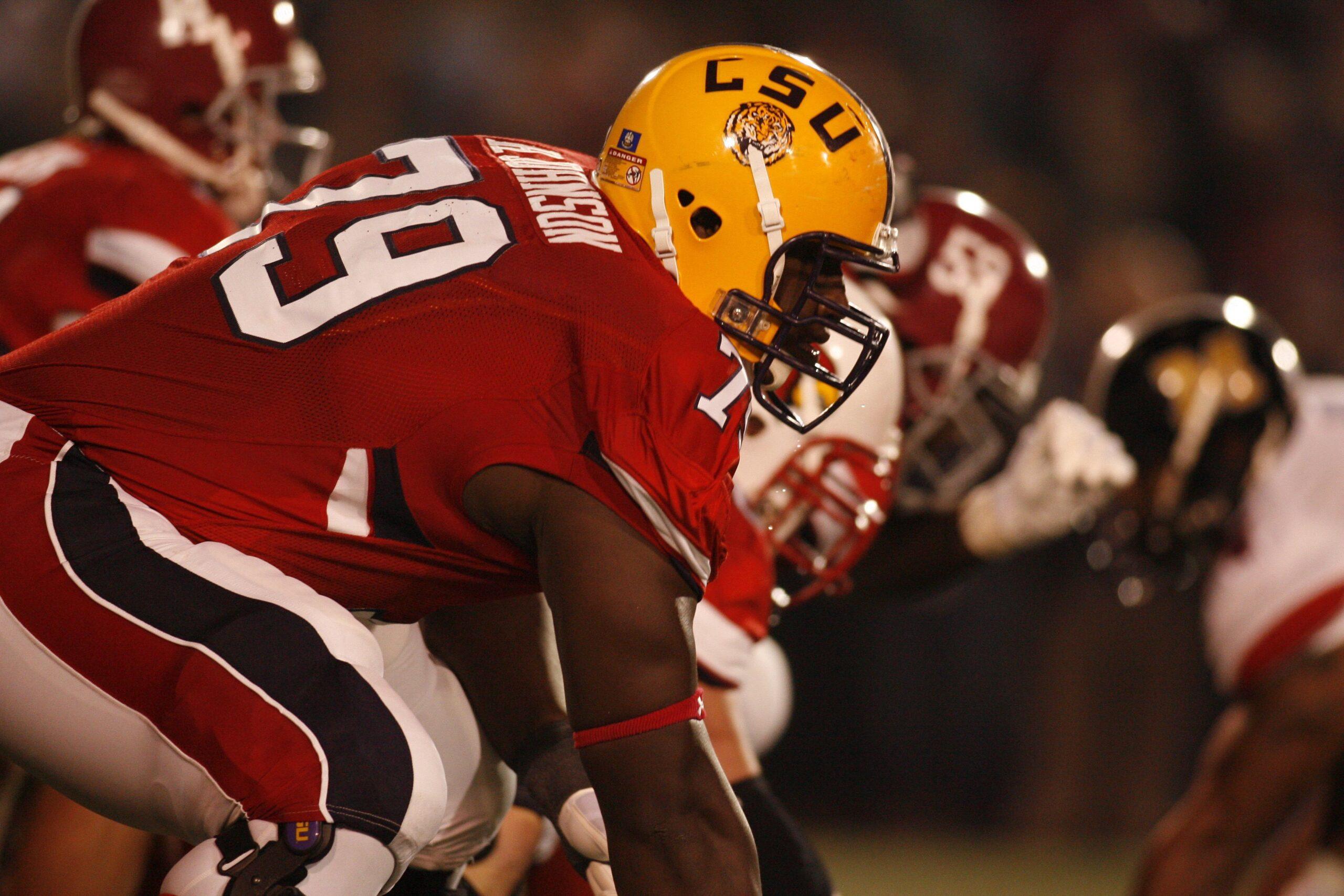
Johnson is 6-feet, 7-inches tall and weighs 386 pounds. When he was born, he weighed 15 pounds and 14 ounces, and was one of the largest babies ever born in the state of Louisiana. The nickname is exceedingly appropriate. Also, nicknaming huge people after huge inanimate objects is one of my favorite pastimes. There’s the Refrigerator, the Bus, the Freezer … but a house is bigger than all of those things.

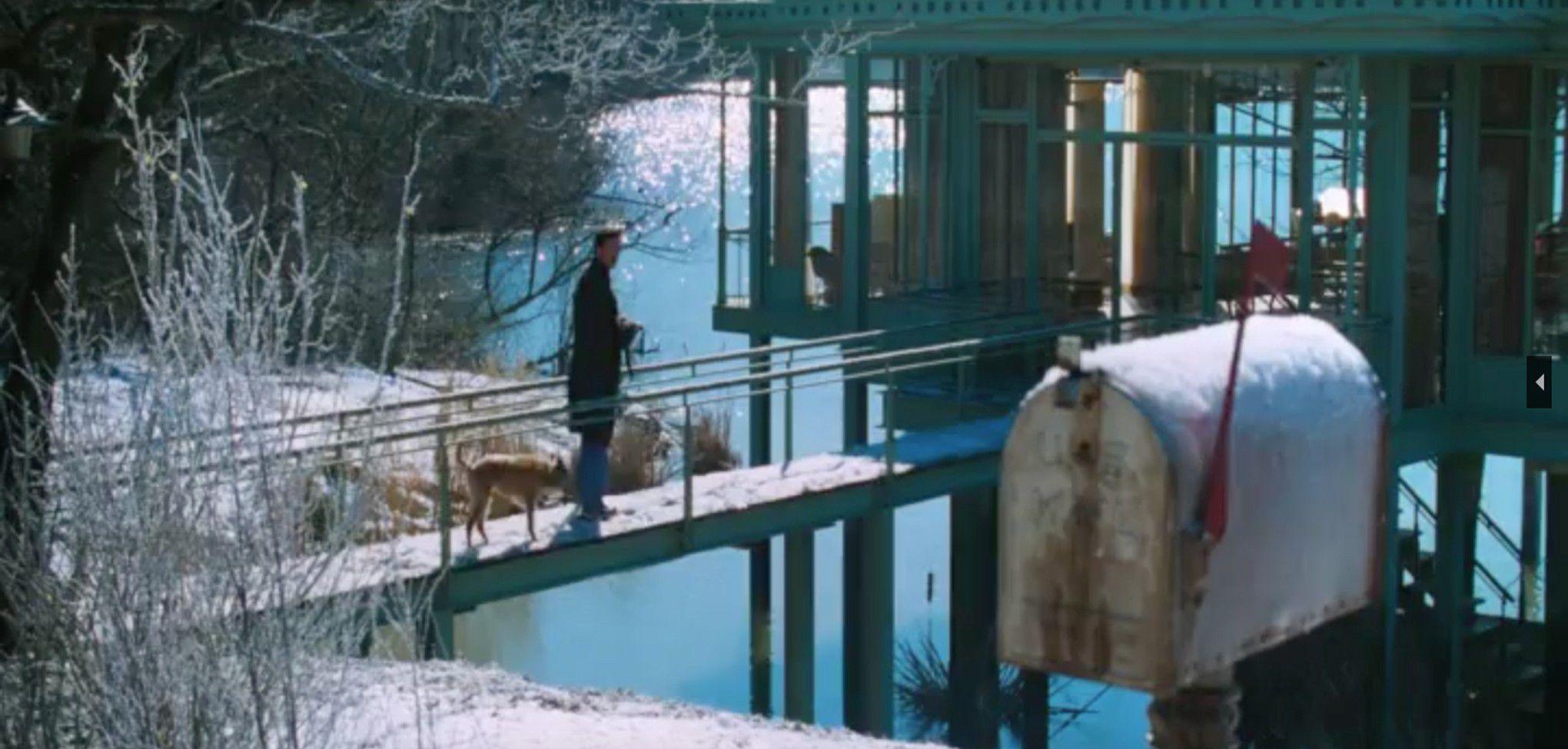
5. The House From ‘The Lake House’
Shea: Andrew, have you seen this movie? It’s incredible. It’s about a man and a woman who are sending love letters to each other through a mailbox that somehow transmits mail through time. (The man and the woman are on separate timelines two years apart in the same universe.) (Or something.) (I’m not entirely sure.) (I just know that it’s incredible.) (And it’s the only movie I’ve ever seen where the two main characters spend a significant amount of time standing at a mailbox and staring at it.) (I feel like we don’t celebrate mailboxes enough.)
4. The House From ‘Road House’
Shea: Let me say three things here: (1) Before we started working on this article, I didn’t know that a roadhouse was an actual thing. I thought it was just a cool phrase that someone had thought up for this movie. Turns out, that wasn’t the case at all. Turns out, it has a definition and everything. It’s listed as "an inn or tavern usually outside city limits providing liquor and usually meals, dancing, and often gambling." I’m not sure why I find that so interesting, but I do. (2) I’m taking the first rule you set in place (the one about the Movie House needing to be a house) and twisting it and pulling it and gummying it up as much as I can to make sure that it fits here. The phrase you used to define a house was you said it had to "provide shelter, and be a standing structure under which a small group of people can either live or congregate." Both of those things absolutely happen inside the Double Deuce so I’m calling it a house, as defined by the parameters set forth here today. (3) I was reading through a bunch of Road House trivia. The barn that Patrick Swayze’s character, Dalton, lives in in the movie was actually built specifically for that purpose. That’s neat. Also, did you know that Swayze was approached about starring in Predator 2 but couldn’t do it because he got injured during the filming of Road House? Also, did you know that a bunch of the characters had the names they had as sly hat-tips to the Wild West? For example, Wade Garrett, Dalton’s mentor who dies in the movie, was named after Pat Garrett, who was shot and killed by Billy the Kid. Brad Wesley, the main bad guy in the movie, was named after John Wesley Hardin, a notorious outlaw and gunfighter. Dalton’s girlfriend, nicknamed Doc, was given that name because of Doc Holliday. There was a lot more going on in Road House than I’d realized.

Satellite Ranking No. 3: Non-Movie Pop Culture Houses, Ranked by How Good They Would Be at Solving Your Mysterious Illness, From Least Likely to Most Likely — Shea
10. The different houses from Game of Thrones
9. House of Pain (the band)
8. House of Blues (the music venue)
7. Those old Under Armour commercials where the people shout, "We must protect this house!"
6. House Hunters (the TV show)
5. House music from the early 2000s
4. House of Cards (the show on Netflix, not to be confused with House of Carbs, The Ringer’s new food podcast)
3. Run’s House (the TV show)
2. When you block someone in basketball and shout, "Not in my house!"
1. House (the TV show)

3. The House From ‘Home Alone’
Andrew: To address why this is such a good Movie House, we must first acknowledge this: that the house in Home Alone is FREAKING AWESOME.
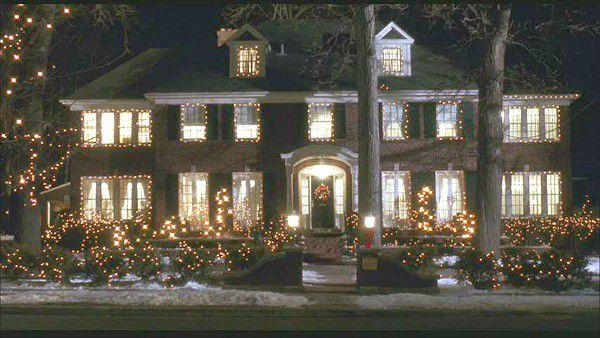
That is a massive, beautiful piece of real estate. Do we know what Kevin McCallister’s dad does? He has to be super-rich, right? Off the top of my head, I know that Peter McCallister wears dapper peacoats, pays for his entire extended family to go on trips to Paris and Miami, and owns this house. He may be one of the wealthiest men in America.
But anyway, the house being so magnificently large — it has three stories! — makes it the perfect setting for Kevin’s guerilla warfare tactics against two small-time crooks named Harry and Marv. There is a big staircase from which Kevin can fling paint cans, another on which he can set a tarantula loose, and plenty of nooks and crannies for him to hide in and/or cover with Christmas ornaments or tar. It even has the perfect escape setup: a zipline from a third-story window to a treehouse in the McCallisters’ backyard. All the credit in defeating Harry and Marv should go to Kevin, the littlest, cutest hoodlum out there, but the McCallister estate provided him with some extremely helpful assists.
Knowing that I would one day be robbed by Joe Pesci and Daniel Stern, I would still move into this house immediately.
Shea: You jokingly mention Kevin being "the littlest, cutest hoodlum." I would like to point out that after his parents accidentally left him alone for Christmas again for a second time in 1992 (Home Alone 2: Lost in New York), he for real lost it. Less than a year later, he’d killed his younger brother, tried to kill his younger sister, tried to kill a dog with a bolt gun he built, caused a massive car crash on the freeway that injured an untold number of people, and tried to guilt his mother into letting his cousin fall to his death off a cliff (The Good Son, 1993). I think it’s time we start investigating the idea that perhaps it wasn’t that the McCallisters were forgetting Kevin, it’s that they were running away from him.

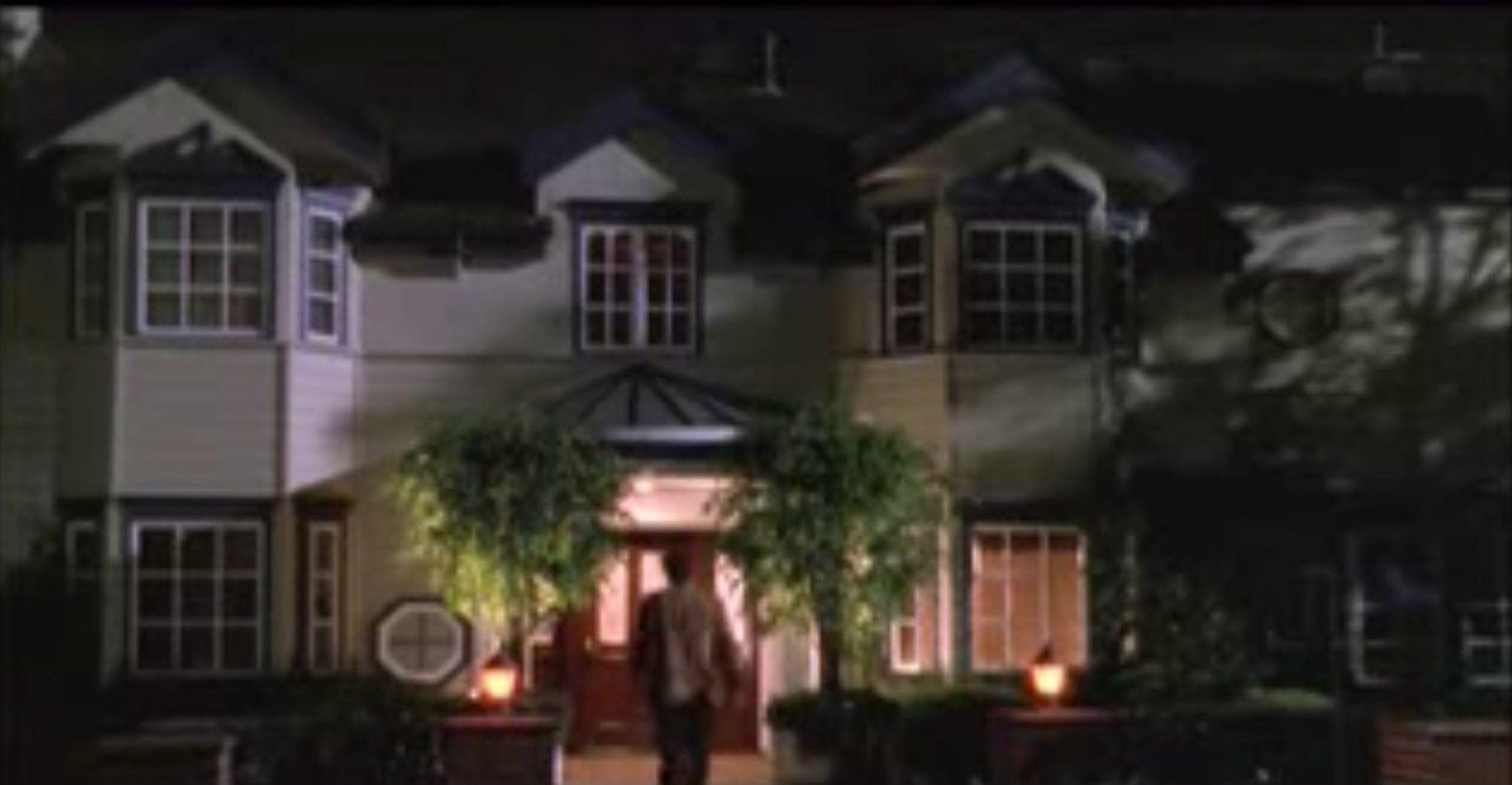
2. The House From ‘Smart House’
Andrew: Before anyone was talking about the singularity, the idea that technology could potentially become too smart and turn on humans was tackled by the Disney Channel Original Movie Smart House. The plot of Smart House is appropriately light-sounding for a movie that aired alongside Even Stevens: "A teenage computer whiz, his widowed father, and his little sister win a computerized house that begins to take on a life of its own." And for a while things are super fun — the walls of the house are LED screens that the kids can play video games on, the house throws a dope party, and its voice is Katey Sagal! — but then they get super dark. The smart house turns into an overprotective mother type, it literally locks the family inside, and Sagal’s voice goes from Married With Children to that time she hit a woman in the face with a skateboard on Sons of Anarchy.
The Smart House only chills out when Ben, the "teenage computer whiz," reminds it/her that it/she’s not real. Yeah, I don’t follow that logic either, because in real life if you insult a spiteful robot by calling it soulless, it will probably vaporize your entire family and be like, "Oh yeah? Well you’re dead now."
So the Smart House is scary, but as a Movie House it’s basically perfect. It’s really impressive from an appearance standpoint, it’s sentient, and it’s the entire focus of its movie. It carries the movie. And Shea, I know that, as a house, it made a serious cultural impact on people who grew up during the Disney Channel’s heyday, because I mentioned this project to two people earlier this week and they both said the same thing: "Well, you’re including Smart House, right?"
Shea: It’s important to note again here that Smart House is clearly not a better movie than any of the movies it finished ahead of here, it’s just that the house in it fits into the grading rubric better than the houses from the movies it finished ahead of.

Satellite Ranking No. 4: Three Life Lessons From Trick Daddy’s "Take It to Da House," Ranked in Order of Importance — Andrew
You may think that Trick Daddy’s "Take It to Da House" is just a pump-up anthem by Mr. Daddy and his friends, the Slip-N-Slide Express, to which I’d say: How DARE you be so reductive. In between that one guy repeatedly yelling, "Take it to da house, take it to da house," there is some very good advice. Such as:
3. "You want them thugs to come and turn yo’ party out / You better take it to da house"
Pretty simple: If you want people to come to your functions, you need to pull out all the stops. This advice is specifically mentioned in the song in regard to hosting parties, but it extends to most things in life. For example, when Shea and I first discussed doing this article, we recited this lyric — only we replaced "thugs" with "readers," and "party" with "online blog post."
2. "Fuck fame, we out to get paid"
Money is better than renown, because you can buy things with money. Trick Daddy is smart.
1. "Live in yo’ own crib and make yo own bucks"
This lyric comes from Slip-N-Slide member Money Mark, and it is extremely sensible from a business standpoint. Investing in real estate is a great way to make bank — just ask Jay-Z, who recently kinda-sorta racistly made this point when talking about Jewish people on "The Story of O.J." Money Mark and Jay-Z pretty much have the same business acumen, but Money Mark likes stereotypes less.

1. The House From ‘House Party’
Shea: There are no gimmicks here. There aren’t any tricks. The house from House Party doesn’t rely on anything silly or dumb or weird or impossible to position itself as integral to the movie or the movie’s plot. It doesn’t require for us to pretend that time travel can happen, or for us to pretend that an entire house can become artificially intelligent, or for us to pretend that a preteen wouldn’t have accidentally set his house on fire if he was actually left home alone for more than 45 minutes. It simply exists; it is simply there; indispensable and stately. Without the house, there is no party. And without the party, there is no movie. And without the movie there is no freestyle rap battle scene or dance scene or Robin Harris Roasts Everyone scene or "We Would Smell Like Pussies to a Bunch of Dicks" scene. All of the best parts of House Party — which is a perfect movie, mind you — happened in the house, or near the house, or because of the house. It is, in short, the perfect movie house.
